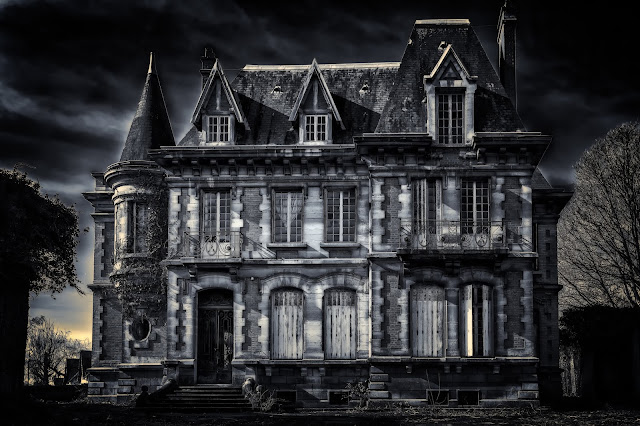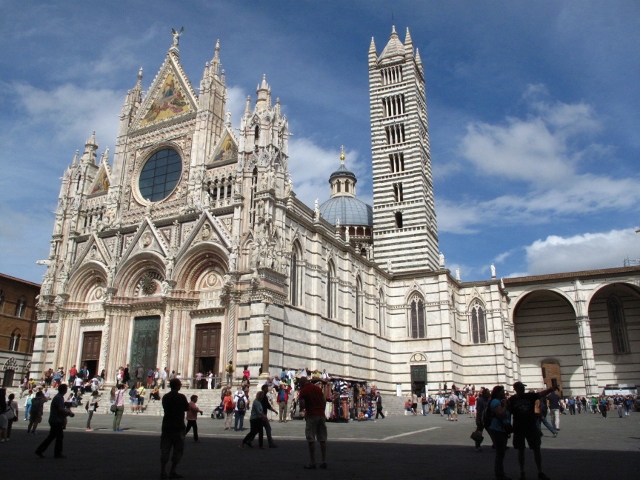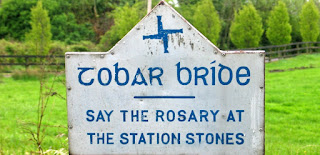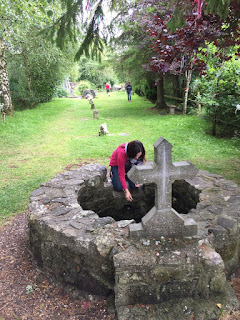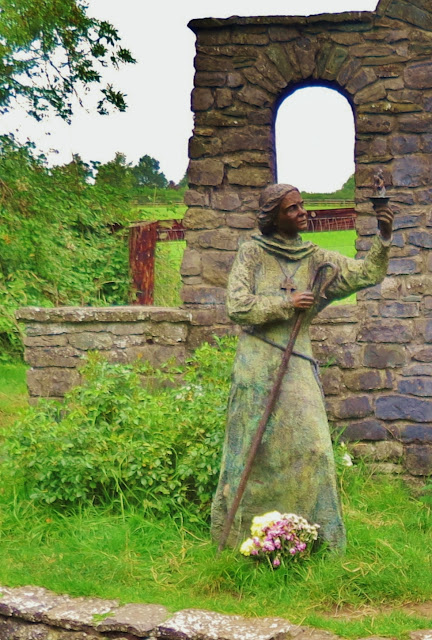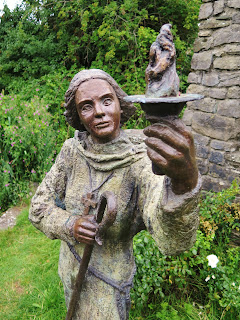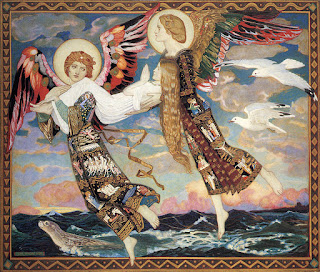Ghostly sightings are not usually part of your travel experience, but once in awhile, you are bound to run into something that goes bump in the night...
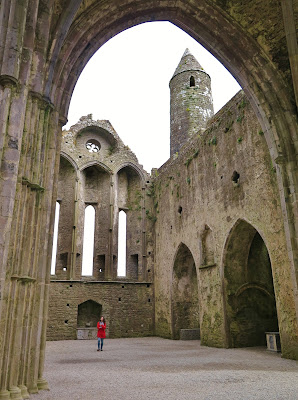 |
| The Creepy Ruined Rock Of Cashel, Ireland |
Many times our travels take us to ancient places that have been the scene of a bloody battle, a burial site or some other kind of historical tragedy. From castles to churches, megaliths to burial mounds, we can get a spooky feeling in a dungeon or in an early Christian catacomb. The thing is, as tourists, we often know the history of the place we are visiting, therefore we know that many people may have died precisely where we are standing today. You almost expect to feel the hair stand up on the back of your neck when visiting a 3,000-year-old burial chamber in Ireland or an Etruscan necropolis in Tuscany or an old ruined castle.
What you don't expect is a romantic getaway to a quaint Inn to turn into a ghostly encounter! There were no castles, no graveyards, no building with a tragic past...or so I thought.
 It was in 2007, and my family was in Ontario for a surprise Christmastime visit to my mother-in-law in the Kitchener area. Between Christmas and New Year's Eve, my husband and I decided to leave our 6-year-old son with Granny overnight and have a much needed romantic weekend. Searching online, my husband found a Victorian mansion that had become a B&B in Owen Sound, about a three-hour drive north of Kitchener.
It was in 2007, and my family was in Ontario for a surprise Christmastime visit to my mother-in-law in the Kitchener area. Between Christmas and New Year's Eve, my husband and I decided to leave our 6-year-old son with Granny overnight and have a much needed romantic weekend. Searching online, my husband found a Victorian mansion that had become a B&B in Owen Sound, about a three-hour drive north of Kitchener.  |
| Highland Manor B&B |
We packed our overnight bags and took off in our rental car. The drive to Owen Sound from Kitchener was beautiful. We took country roads that meandered past brick farmhouses and through small Ontario villages. It was lightly snowing, and we were in the Yuletide spirit, listening to carols on the car radio and stopping for eggnog lattes along the way. We arrived in Owen Sound just as it was beginning to get dark, and the main street was lit up in Christmas lights and seasonal greenery. We made our way up to West Hill that overlooks Owen Sound and pulled up to our bed and breakfast. The Highland Manor Inn is a stately 1872 Victorian manor house with beautiful arched windows and a wrap-around verandah.
The owners Paul and Linda met us upon our arrival and checked us in, and then took us up a sweeping grande curved staircase that ascended 40 feet to the second floor. Our bedroom room was the "Ross Room" named after the original owners. The room was bright and inviting and had a romantic bedside fireplace that we were enthusiastic to light that evening. I asked the owners of the B&B to recommend a restaurant to us for our dinner that night, and they kindly called to make reservations at a little steak house down the hill. The restaurant was nearly booked that evening, but they squeezed us in late for a late meal.
 |
| The Ross Room |
When we returned back to the Highland Manor from our dinner, it was near 11pm. Belly full, I decided to go back down to the main floor and enjoy the architecture and decor of the library, which was across from the music room. Shortly after, my husband came downstairs to join me, and we quietly chatted and thumbed through books and magazines in the library. The lights of the 1o foot tall Christmas tree glowed in the dim lighting of the hall, and the house was still, except for the ticking and chiming of a grandfather clock.
Just after the clock tolled midnight, a strange thing occurred. What felt like a cold breeze came spilling down the staircase. It was as if someone had opened a door or window at the top of the stairs. There was also a distinct strong scent of pine oil cleaning products! When I say "distinct," I mean it smelled of an old fashioned cleaner like Pine-Sol mixed with bleach; the kind my grandma used to clean her bathroom. My husband looked at me and asked, "Do you smell that?" to which I replied, "Who would be cleaning at this time of night?"
Immediately the atmosphere of the room changed, becoming oppressive, and we felt uncomfortable. We decided to turn off the reading light and head up to our bedroom.
The bedroom felt better. My husband had the firelog in our room's little fireplace burning, and it was so cozy under the blankets listening to the winter wind blowing against our windows. Soon our romantic evening took another strange turn; I kept hearing a baby crying. I speculated with my husband that maybe one of the guests had a baby get sick, therefore explaining the smell of Pine-Sol. The only problem is that my husband could not hear a baby crying. I even asked him to poke his head out into the hallway to see if he would be able to hear the baby's cries. He heard nothing. Feeling a bit uneasy about the night's events, we decided to go to sleep drifting off on the heavenly Tempur-Pedic memory foam mattress.
I slept restlessly for a few hours until, at about 3 am, a noise woke me up. I heard a creaking sound coming from the direction of the window. I slowly opened my eyes, adjusting them to the dim glow of the firelight. There, in the corner by the window, I saw the shadow of a woman sitting in the rocking chair! My eyes flew open, I sat up, and I reached to turn on my bedside light. She was gone! My blood ran cold, and I shook my husband awake. I told him what I had just seen, and he believed me entirely. He told me he had a feeling of being 'watched' while going to sleep. I was SO scared that I kept the light on for the rest of the night. I kept waking up and looking at the rocking chair...but it remained empty for the rest of the night.
The next morning we went down for a delicious breakfast. Homebaked scones served with homemade jam and the main breakfast course that we chosen the previous day upon check-in. I looked around the dining room, surprised I didn't see anyone with a baby that I had heard crying. As he was pouring the coffee, I asked the owner Paul, if anyone had been cleaning at a late hour the preceding night. "No," he kind of chuckled nervously in reply and then changed the subject.
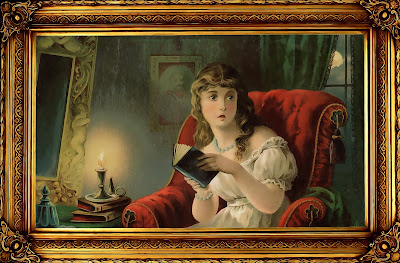 After breakfast, while we were lingering over our coffee, I asked Paul and Linda about the history of the house. As far as they knew, the house had been built in 1872 by Mr. Ross that had come to Canada from Scotland. Mr. Ross also owned a hotel down by the water that served the passengers and sailors that came into town on the steamships. Mr. Ross was unmarried, and no one knows how he had made his fortunes in Scotland. Once Mr. Ross had the Highland Manor built, he brought his two spinster sisters Ethel and Amy over from Scotland to join him. After some years, Mr. Ross came into financial hardship and disappeared, leaving the two unmarried sisters to fend for themselves. They eventually had to sell their beloved Highland Manor house and moved to Vancouver. The house changed hands several times until it was purchased in 1919 by Miss Moore, who converted the mansion into a private maternity hospital called Miss Moore's. That's right; between 1919 and 1940, over 2,000 births were recorded here! Surely, there were also some deaths.
After breakfast, while we were lingering over our coffee, I asked Paul and Linda about the history of the house. As far as they knew, the house had been built in 1872 by Mr. Ross that had come to Canada from Scotland. Mr. Ross also owned a hotel down by the water that served the passengers and sailors that came into town on the steamships. Mr. Ross was unmarried, and no one knows how he had made his fortunes in Scotland. Once Mr. Ross had the Highland Manor built, he brought his two spinster sisters Ethel and Amy over from Scotland to join him. After some years, Mr. Ross came into financial hardship and disappeared, leaving the two unmarried sisters to fend for themselves. They eventually had to sell their beloved Highland Manor house and moved to Vancouver. The house changed hands several times until it was purchased in 1919 by Miss Moore, who converted the mansion into a private maternity hospital called Miss Moore's. That's right; between 1919 and 1940, over 2,000 births were recorded here! Surely, there were also some deaths. |
| Scrooge & Marley by John Leech |
Since my visit to The Highland Manor Inn over a decade ago, it has become my Christmas tradition to read Charles Dickens' "A Christmas Carol" between Christmas and New Year's Eve. Reflecting back on my haunted romantic weekend now, I appreciate the Victorians' connection with ghost stories at Christmas time. Christmas is a time of reflection, taking stock of our lives and remembering those living and dead, who are no longer with us.
And what is remembered; LIVES.
Have you had a haunted travel experience? I would love to hear about it in the comments!
Follow me on FACEBOOK, INSTAGRAM and BLOGLOVIN' for daily photos and updates! #slowtravel🐌
